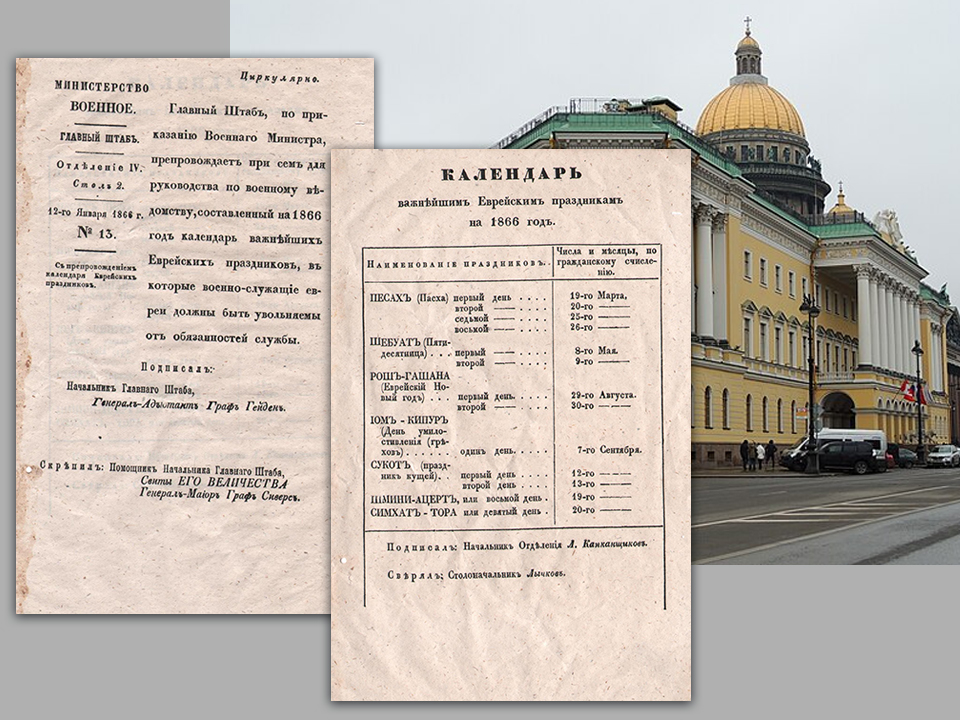


NEW EXHIBIT IN THE MUSEUM
Emperor Alexander II went down in history as a reformer. He began his reign with a wide range of reforms that gradually affected all spheres of public and economic life in Russia. These complex, sometimes radical, measures became known as the Great Reforms. They also affected all ethnic groups represented in the Russian Empire.
Already in his coronation manifesto on August 26,1856 Emperor Alexander II abolished the institution of cantonists: all Jews under the age of 20 were returned from military service to their parents. That move can be pinpointed as the beginning of military reforms that lasted almost until the end of 1874. Changes in the military department affected not only the functionality of the ministry apparatus but also the system of relationships between military personnel in the active army.
In 1866, a circular was issued prescribing the exemption of Jews from service on important Jewish holidays. The circular was supplied with a holiday calendar for the said year.

